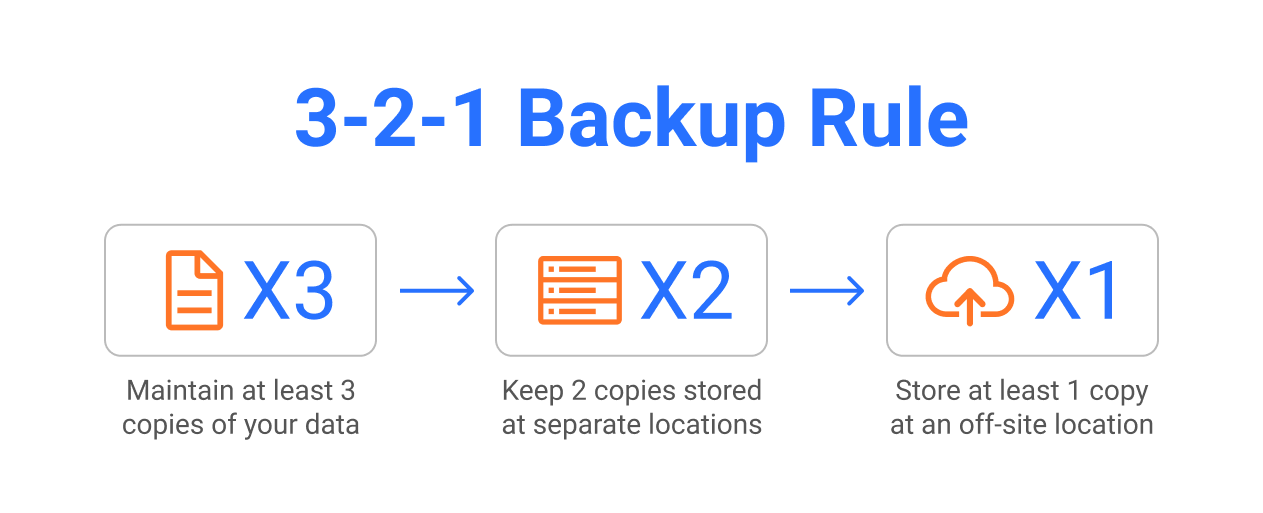As a managed service provider (MSP), data protection and business continuity are critical to your company's success. Establish resilient backup policies, and you'll be able to secure your IT infrastructure, avoid data loss and downtime, and boost your revenue.
Here are five steps you can use to create resilient backup policies.
1. Figure Out What Data Is Essential to Your Business
Categorize your data into system, application configuration, and operational categories. Next, figure out which data is most important to your business operations. Among the backup best practices for MSPs is to identify what data you must protect and how quickly it'll need to be restored. Restore user information and other "hot" data hourly or daily, as well as website content and other "cool" data less frequently. Log your data and review and update it at regular intervals. By doing so, you'll be able to make sure that your data is always backed up.
2. Create Recovery Time Objectives (RTOs) and Recovery Point Objectives (RPOs)
Establish recovery time and point objectives based on your business's mission, values, and goals. RTOs let you track how much time you'll need to recover your infrastructure following a disaster. RPOs help you determine just how much data your business can afford to lose if you go through a disaster.

To clearly understand RPO vs RTO differences, consider the following things:
- Cost of an outage
- Your budget
- What you'll need to do to recover from a disaster
This will help you create appropriate recovery time limits and procedures and determine how frequently you should back up your data. It's also important to know the backup vs disaster recovery difference, to further expand your knowledge.
Further reading Disaster Recovery with MSP360
3. Choose the Right Backup Technologies and Methods
Select the backup software solution that best fits your needs. Full, incremental, and differential backup types are available. Pick a solution that's able to adapt to your IT environment. You may also want one that has a cloud-based management console, ensuring you can view and evaluate your environment from any location at any time. As you evaluate backup methods, follow the 3-2-1 backup rule.
Create three copies of your data (your original dataset and two backup copies) on two types of media, with one offsite copy for disaster recovery.
4. Develop and Enforce Your Backup Policies
Finally, create backup policies for success. Your data should be backed up based on your service-level demands. Make sure your backups include older versions of your data. With mission-critical data, back it up in real time or daily. For all your other data, back it up at least once a week.
Additionally, develop disaster recovery playbooks that will automatically go into effect as needed. These will help you instantly recover data in alignment with your expectations. And implement your backup policies across your IT infrastructure. Teach your team about these policies and make sure they cannot be changed without authorization. Create exact replicas of your backup systems as well. If your data is compromised, you won't have to start from scratch to recover these systems.
5. Monitor and Test Your Backup Systems
Make sure your systems are working by going to your backup drive or the cloud. If they're not working the way you want, take a look at your backup configuration. Keep an eye out for configuration problems preventing you from backing up your data. When you test your backups, check your data, IT infrastructure, and security settings. Also, look at your systems in conjunction with your recovery time and point objectives. If you want to make system changes, start slowly. Test your changes, and over time, you'll find ways to optimize your backup systems and formulate alternative scenarios for resilient backup policies.

Want to Establish Resilient Backup Policies?
Don't wait any longer to create resilient data backup policies. They'll help you keep your business on track now and in the future. Use our steps to back up your data and protect your business and customers like never before.




